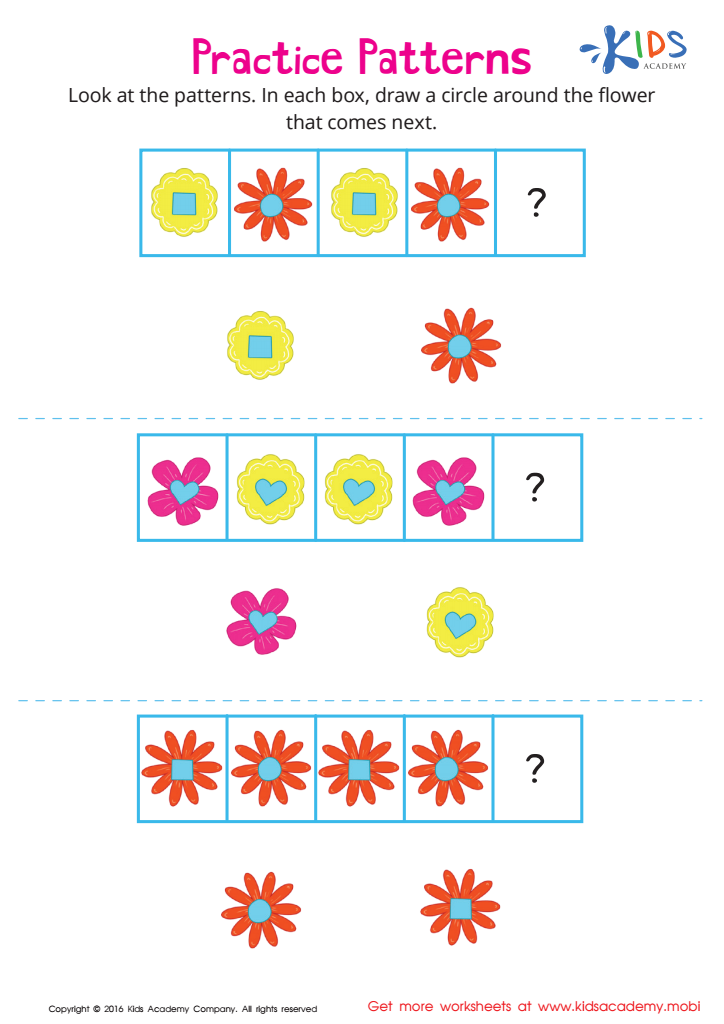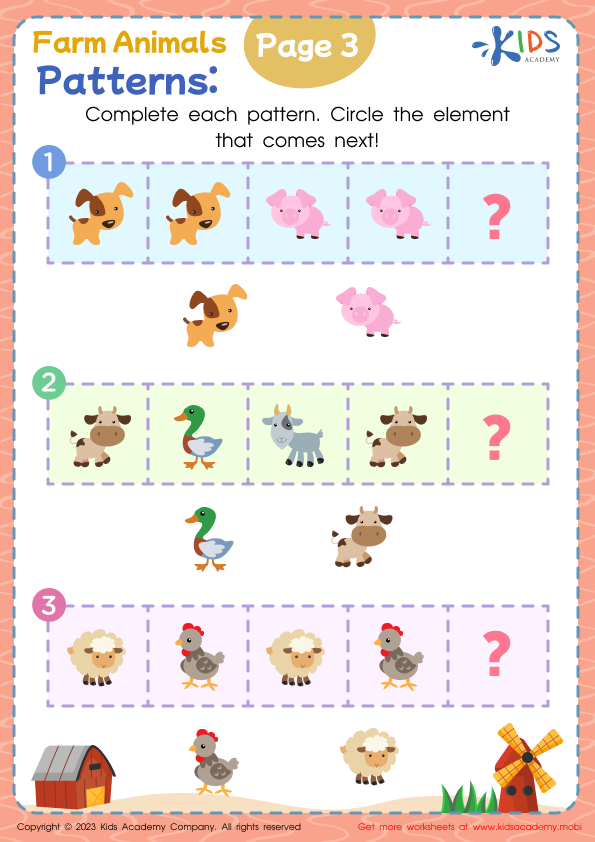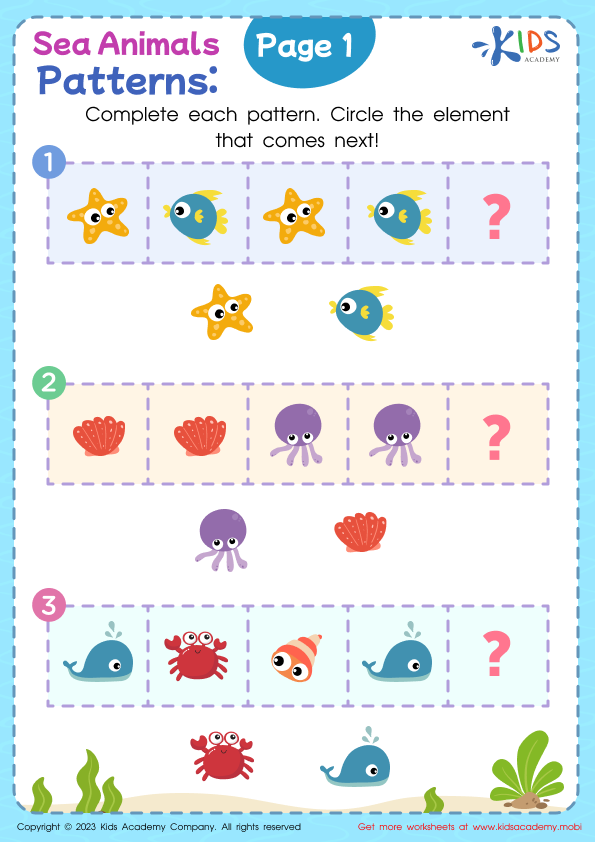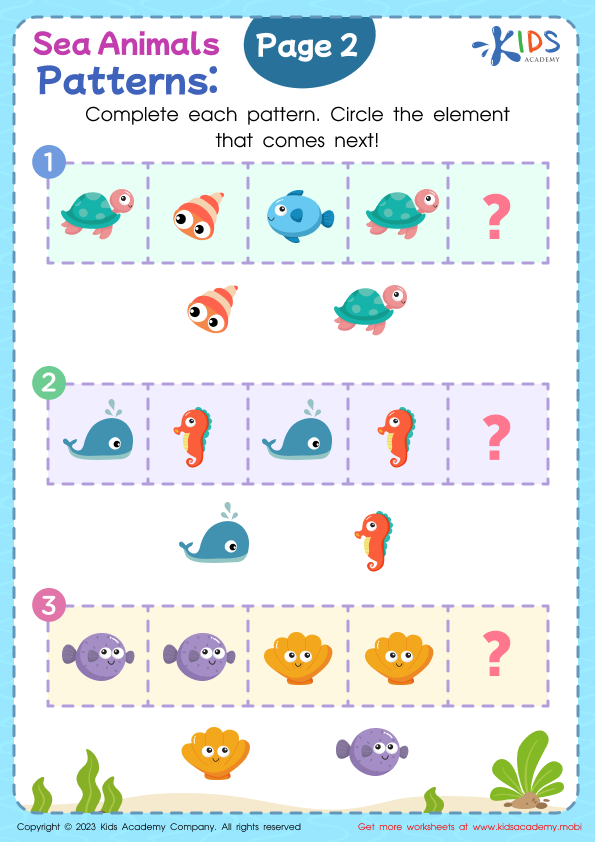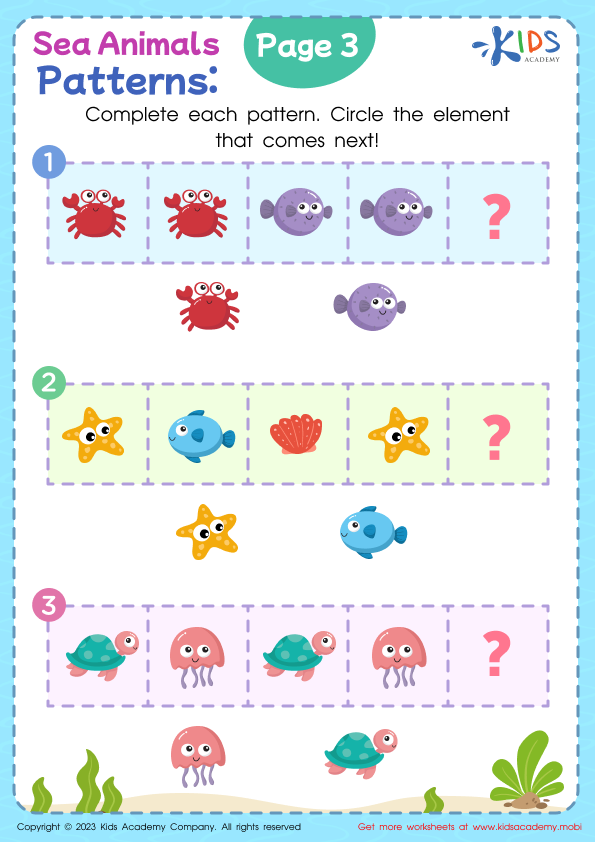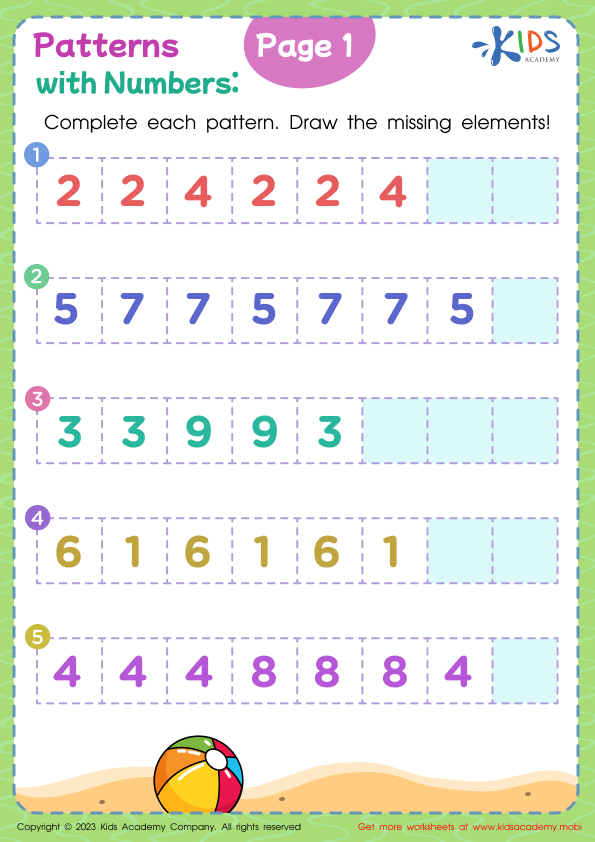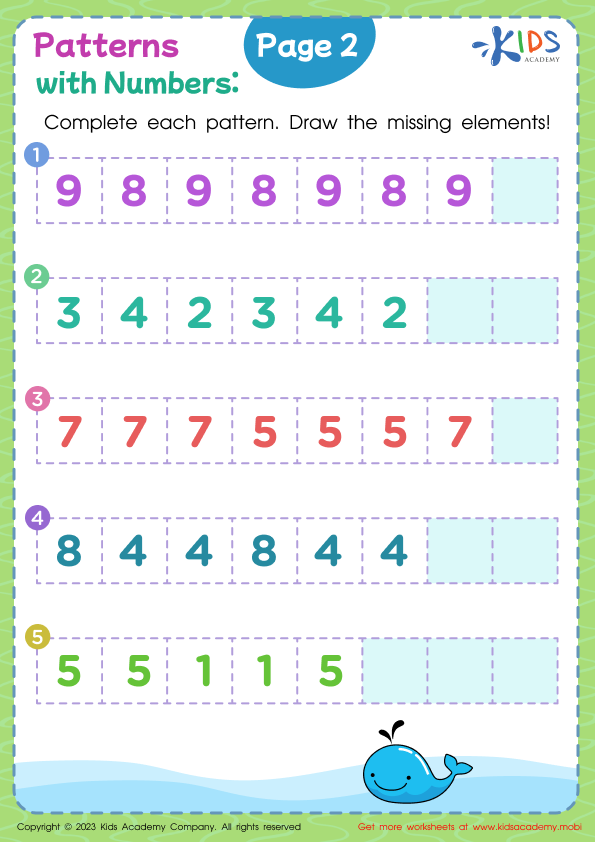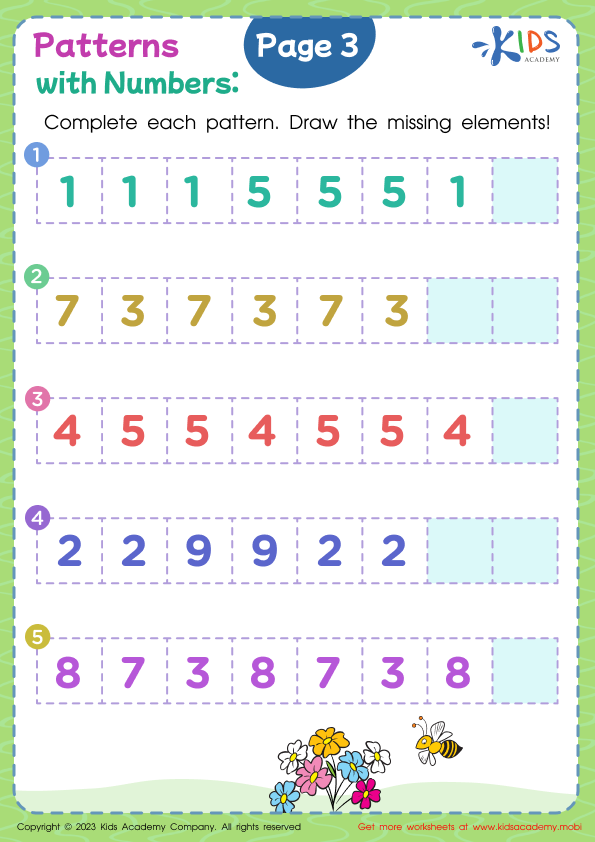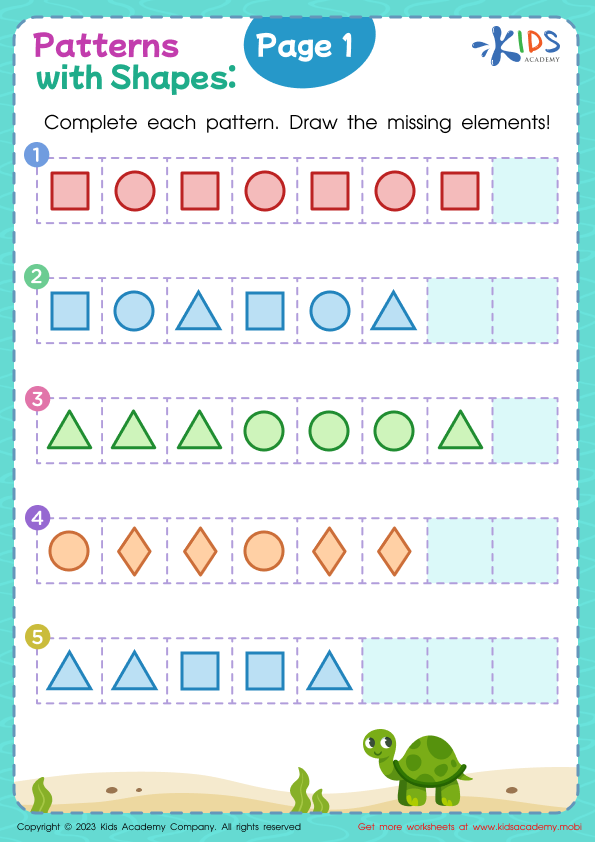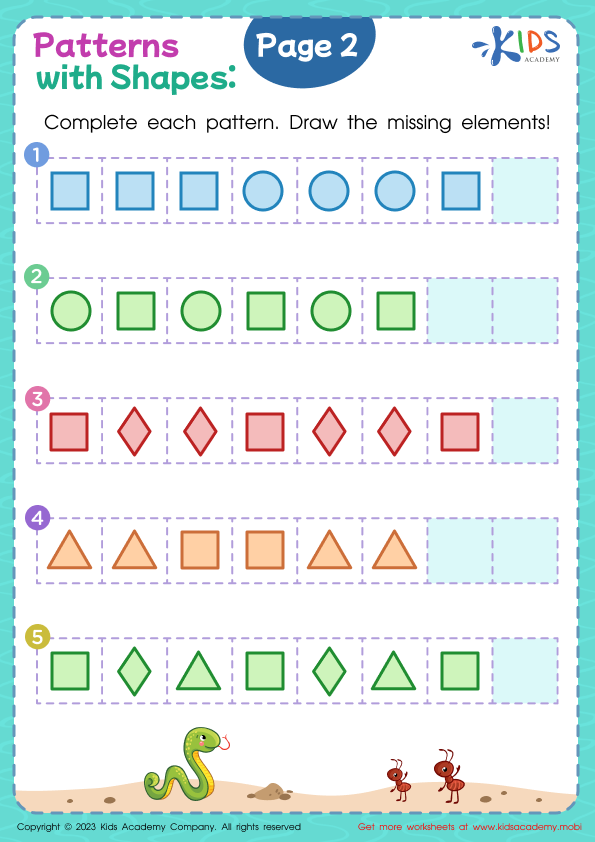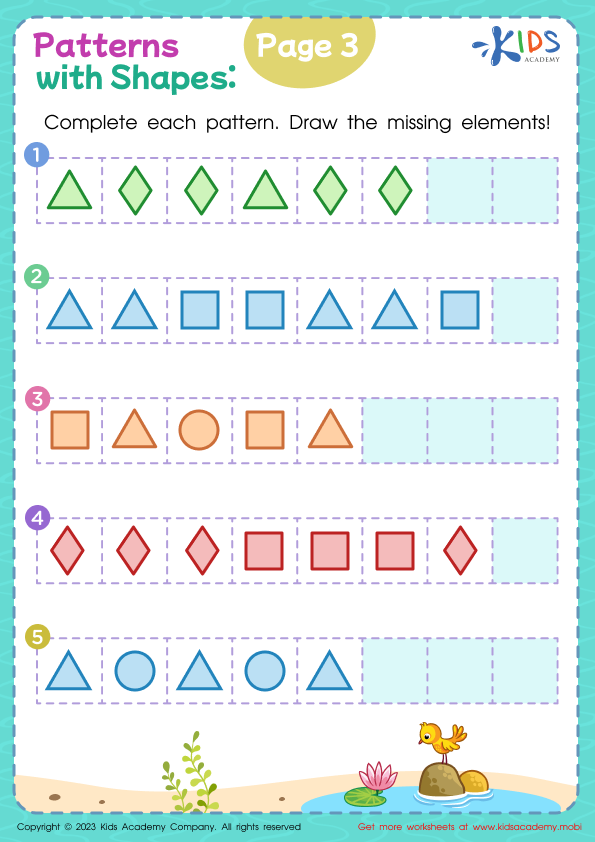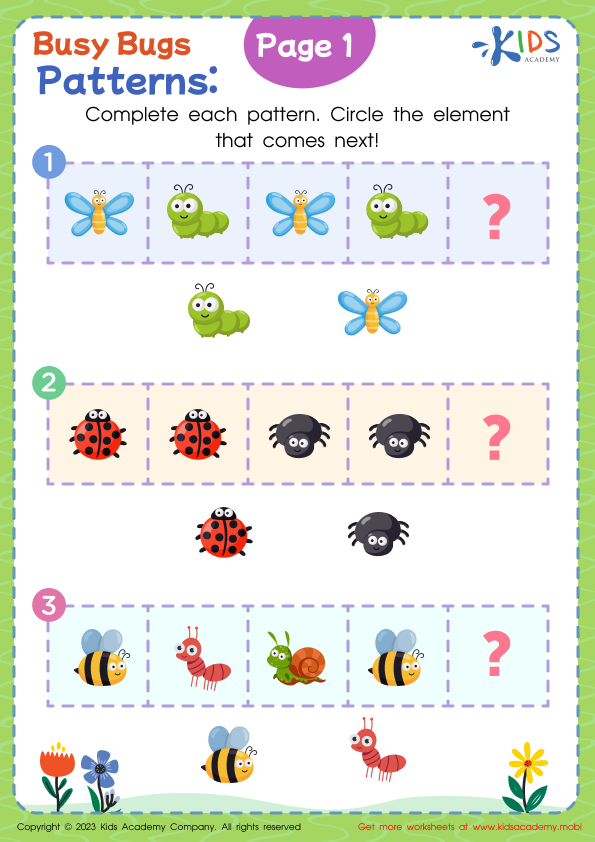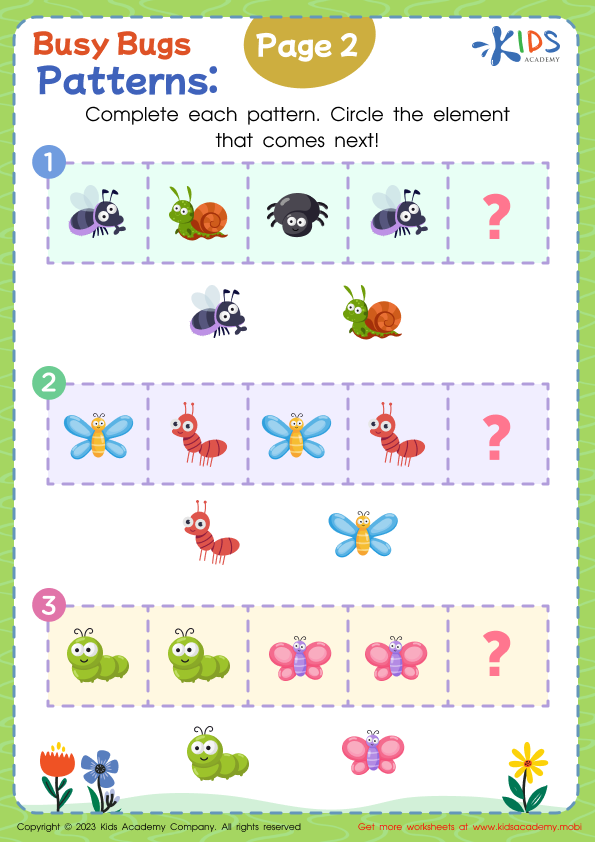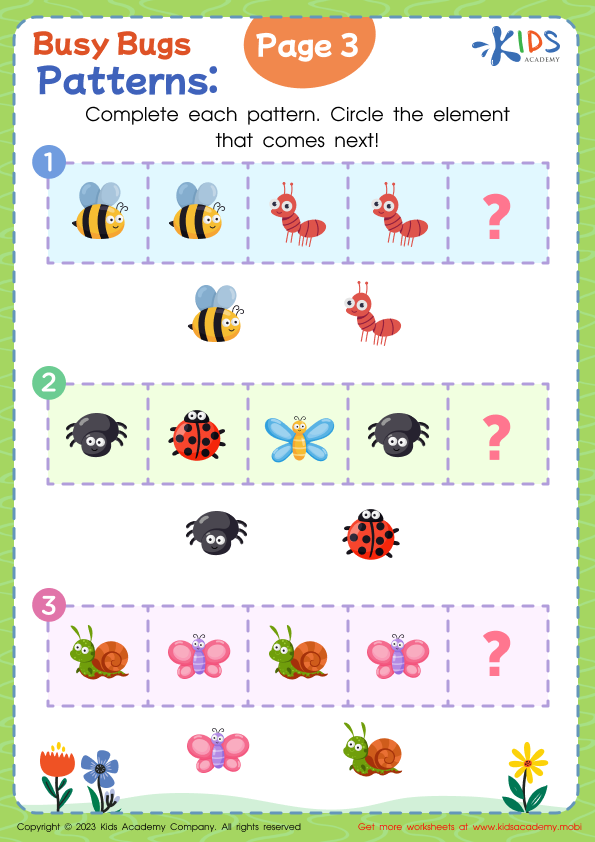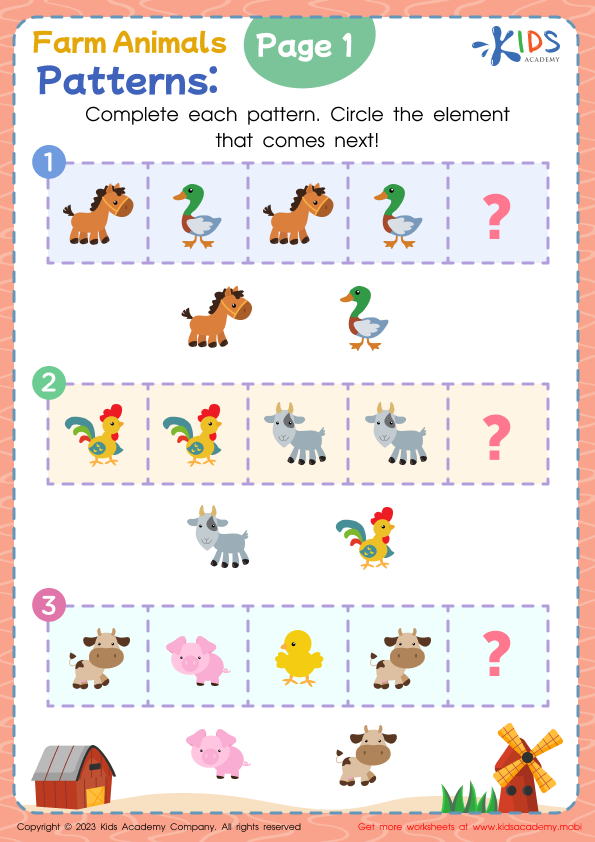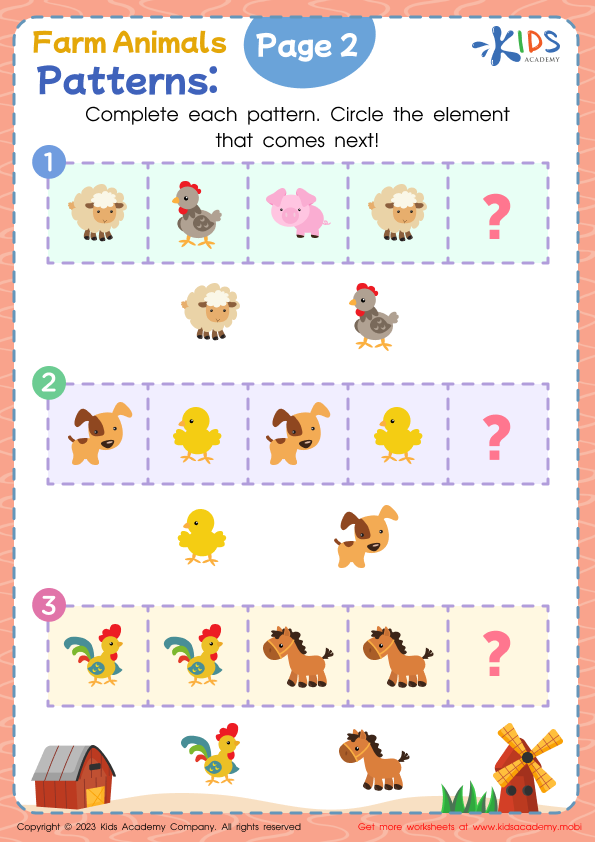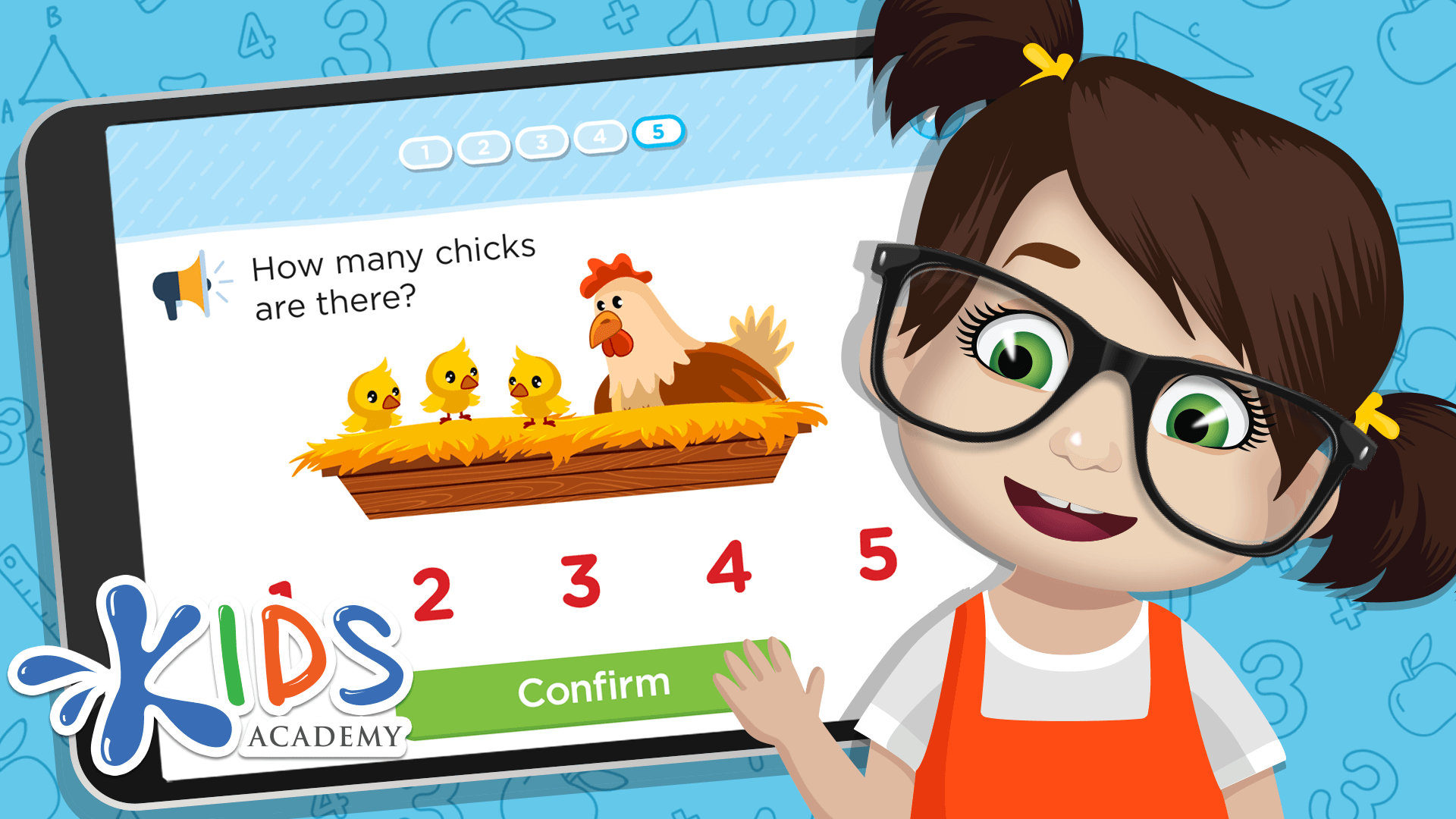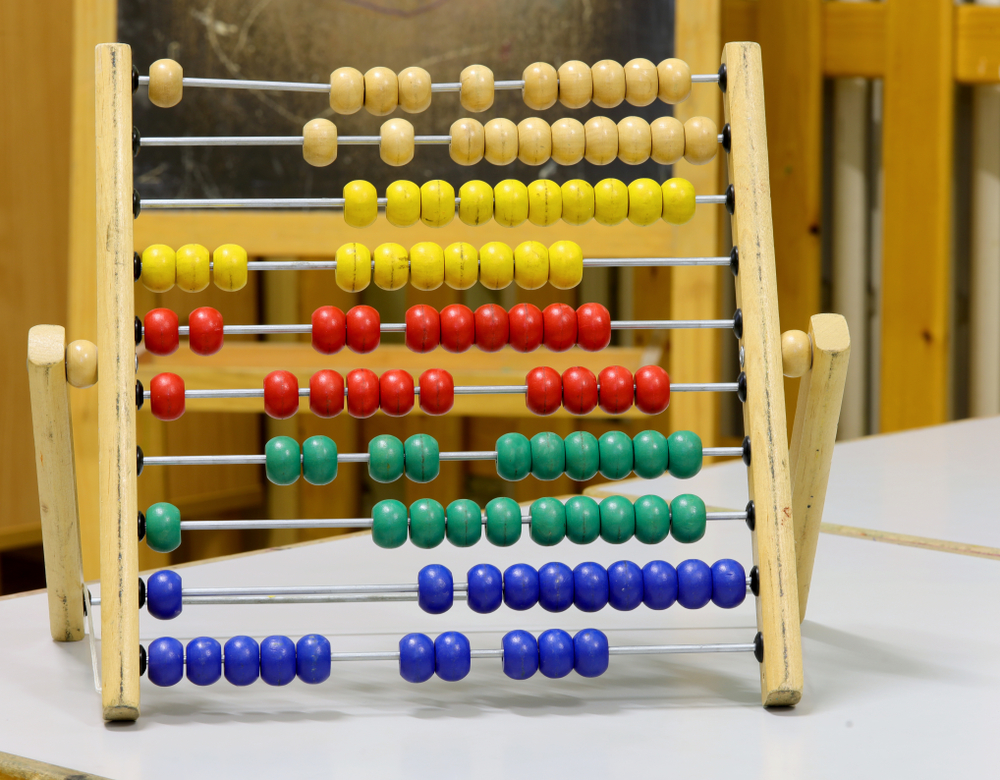Patterns Worksheets for Ages 5-9
21 filtered results
-
From - To
Discover a wide range of engaging patterns worksheets designed specifically for children aged 5 to 9! Our collection helps young learners develop critical thinking and math skills through fun and interactive activities. Kids will explore various types of patterns, including visual, numerical, and sequential patterns, all tailored to boost their comprehension and confidence in math. Each worksheet is age-appropriate, encouraging creativity and logical reasoning while ensuring an enjoyable learning experience. Perfect for homeschooling or classroom use, our patterns worksheets will captivate your child's curiosity and support their educational journey. Download and print for instant access to endless learning fun!
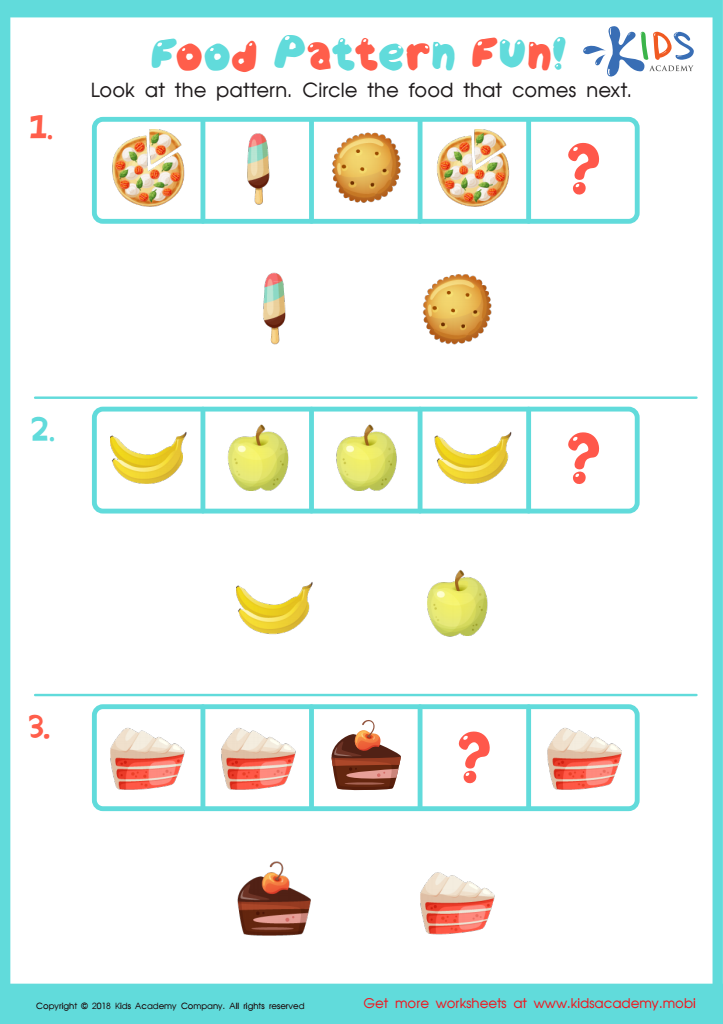

Food Pattern Fun Worksheet
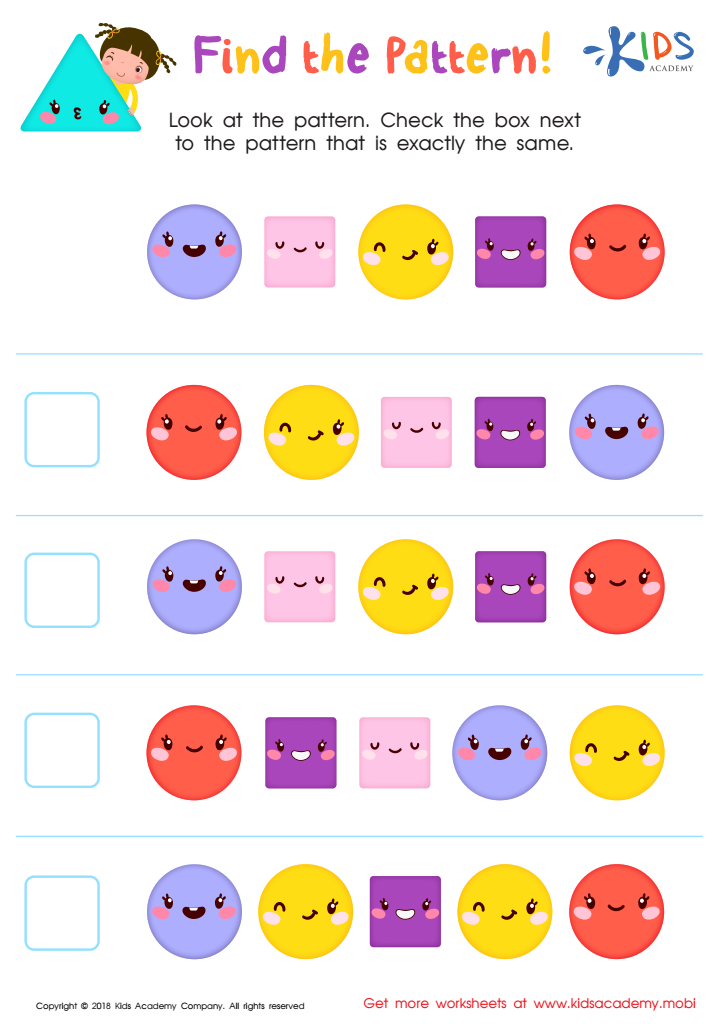

Find the Pattern Worksheet
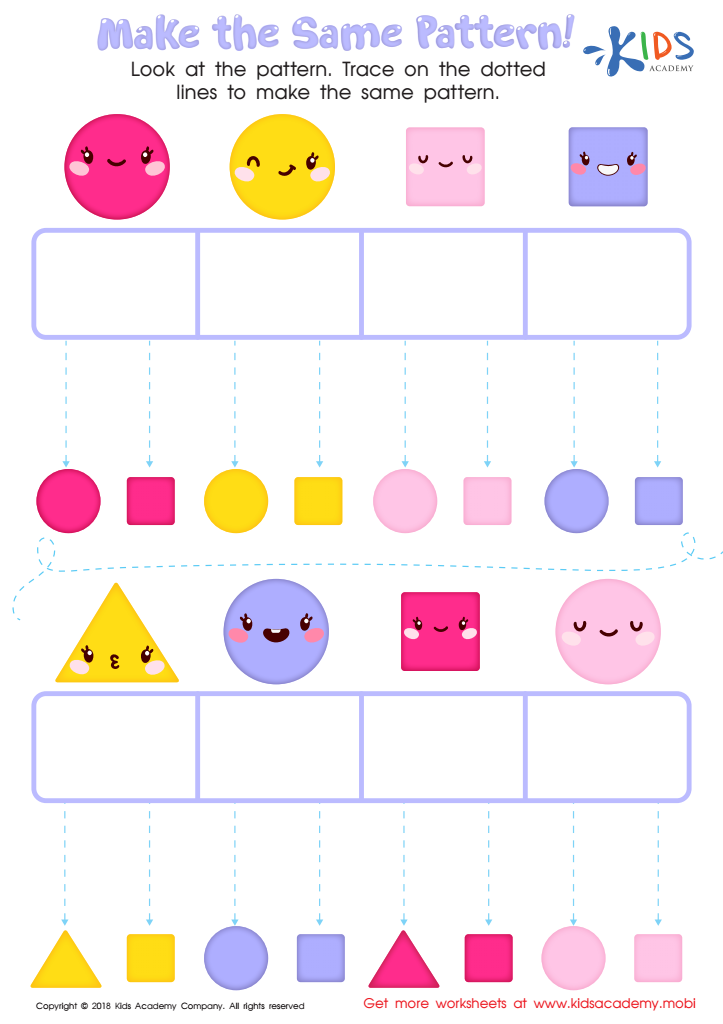

Make the Same Pattern Worksheet
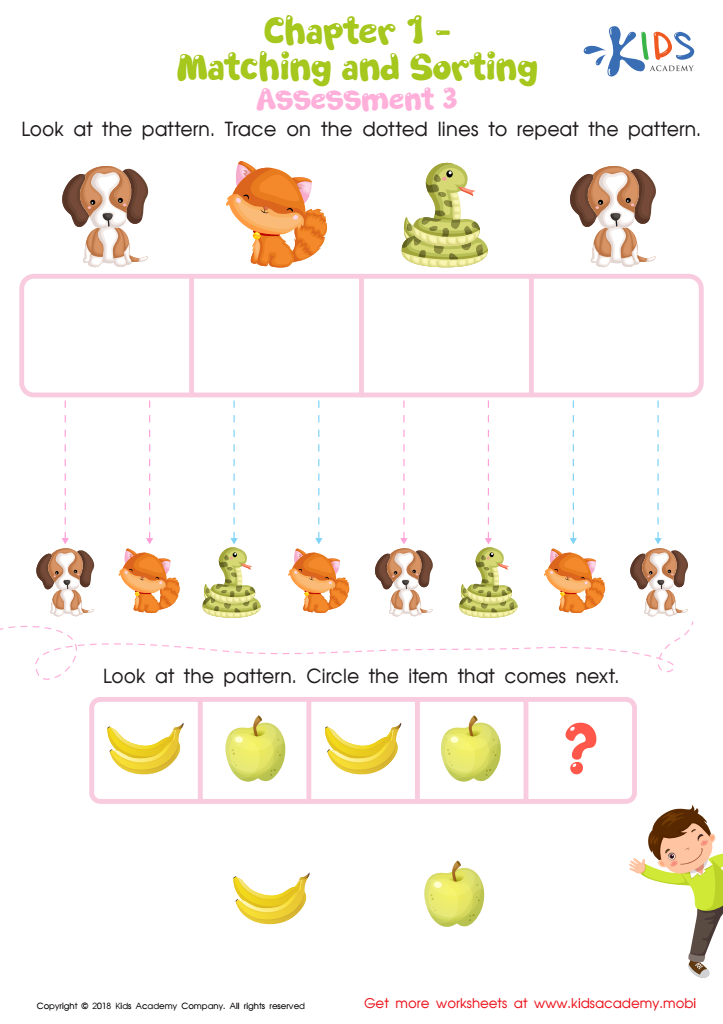

Matching and Sorting for Preschool: Assessment 3 Worksheet


Shape Pattern Fun Worksheet
Understanding patterns is a fundamental skill that serves as a cornerstone for various academic concepts in early childhood education. For children aged 5-9, recognizing and creating patterns enhances their cognitive development, critical thinking, and problem-solving abilities. Parents and teachers should care about patterns because they play a vital role in nurturing a child’s mathematical understanding while also promoting their relational and observational skills.
When children engage with patterns, they learn to identify relationships and make predictions, which are crucial cognitive processes in math and science. Early experiences with patterns help children develop foundational skills such as sequencing, sorting, and classifying, setting the stage for more complex concepts later on.
Moreover, pattern recognition fosters creativity and self-expression, allowing children to explore their unique ideas through art, music, and play. It encourages teamwork and communication when they collaborate on pattern-related activities. By emphasizing patterns in early education, parents and teachers empower children to become confident learners. Engaging children in pattern games and activities nurtures their curiosity and enjoyment of learning, which can lead to a lifelong love for mathematics and the arts. Ultimately, recognizing patterns equips children not just for school, but for understanding and navigating the world around them.
 Assign to My Students
Assign to My Students
